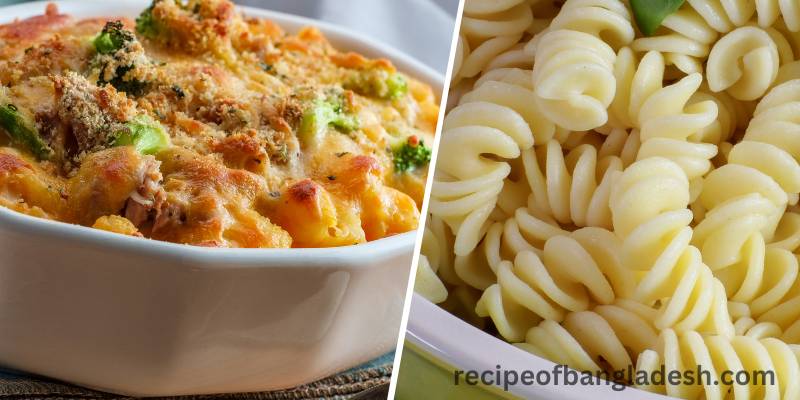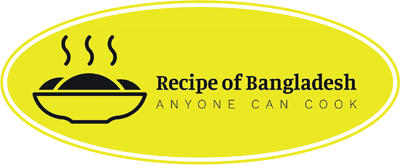Plain pasta, also known as regular or unseasoned pasta, is a staple food ingredient that is versatile and can be used in a variety of dishes. It is made from wheat flour and water, and comes in a variety of shapes and sizes, such as spaghetti, linguine, penne, and fusilli.
Plain pasta is a blank canvas that can be paired with a wide range of sauces, meats, vegetables, and seasonings, making it a great ingredient for both simple and complex recipes.
This recipe provides a brief overview on how to cook plain pasta in the oven, an alternative method to traditional stovetop cooking.
Here’s a short answer: Cooking plain pasta in the oven is a simple and flavorful way to prepare it. Boil the pasta, add it to a baking dish with liquid and seasonings, then bake in the oven until tender. Try this method for a convenient one-pan meal.
Below, I will guide you through the process of cooking plain pasta in the oven, from preparing the ingredients to serving the final dish.

What Is Plain Pasta?
Plain pasta is a simple food ingredient made from wheat flour and water. It comes in a variety of shapes and sizes, such as spaghetti, linguine, penne, and fusilli. It is typically sold dried and can be found in most supermarkets. Some types of plain pasta are also made with egg, semolina flour, or a combination of flours.
Plain pasta is a good source of carbohydrates and is also low in fat and calories. It is also a good source of gluten, which is important for maintaining a healthy diet. It is also rich in B-vitamins, iron, and other minerals.
However, it’s important to note that pasta made with enriched wheat flour, which is most common in store-bought pasta, contains added nutrients such as iron and B-vitamins, which are lost during the refining process.
Plain pasta can be a healthy option when paired with nutrient-dense ingredients such as vegetables and lean proteins. Additionally, it can also be a good gluten-free option when made with alternative flours such as quinoa, corn, or brown rice flour.
What Is Plain Pasta Good For?
Plain pasta is a versatile ingredient that can be used in a variety of dishes. It can be a base for simple pasta dishes such as spaghetti with marinara sauce, or it can be used in more complex recipes like lasagna or baked ziti. It can be paired with a wide range of sauces, meats, vegetables, and seasonings, making it a great ingredient for both simple and complex recipes.
Some examples of dishes and meals that can be made with plain pasta include:
- Spaghetti with marinara sauce and meatballs
- Penne alla vodka
- Fettuccine Alfredo
- Macaroni and Cheese
- Baked Ziti
- Spinach and Ricotta Stuffed Shells
- Classic Carbonara
- Pasta Salad
Plain pasta can also be used as a base for other ingredients and flavors. For example, it can be mixed with pesto, alfredo sauce or a creamy sauce, topped with sautéed vegetables, or served with a side of grilled chicken or shrimp.
Additionally, plain pasta can also be used in casseroles, soups, and salads, adding a new texture and flavor to the dish. The possibilities are endless when it comes to using plain pasta as a base for other ingredients and flavors.
Benefits of Cooking Plain Pasta in the Oven
Here are some benefits of cooking plain pasta in the oven:
- Infusing the pasta with flavor: Baking the pasta in a sauce or broth allows it to absorb the flavors, resulting in a more delicious dish.
- Convenient one-pan meal: The pasta can be cooked and served in the same dish, reducing the amount of dishes and cleanup required.
- No need to constantly stir: The oven does the work of boiling the pasta, freeing up the cook from having to constantly stir it on the stove.
- Reduced risk of boiling over: There is no risk of boiling over as there is with stovetop cooking, making the process less messy and easier to clean up.
- Even cooking: Baking the pasta in the oven ensures that all the noodles cook evenly, eliminating the risk of some noodles being undercooked or overcooked.
- Versatile: The oven-baking method can be adapted to a variety of pasta dishes, from baked ziti to macaroni and cheese.
Can Plain Pasta Be Cooked Without Boiling?
Yes, plain pasta can be cooked without boiling. Some methods include baking it in the oven with liquid and seasonings, or stir-frying it in a pan with sauce and other ingredients.
However, these methods may require some experimentation to achieve the desired texture. Boiling the pasta first remains the most common and reliable method for cooking plain pasta.
How to Cook Plain Pasta in the Oven?
Cooking plain pasta in the oven is a simple and hands-free alternative to the traditional stove-top cooking method. It results in a crispy texture outside while maintaining a perfect al dente texture inside.
Steps for Preparing the Pasta and Ingredients
Preheat the oven to 375°F (190°C).
Bring a large pot of salted water to a boil. The amount of salt added to the water should be around 1 tsp of salt per 4 quarts of water. This will help to season the pasta as it cooks.
Add pasta and cook for 2-3 minutes less than the package instructions. Cooking time can vary depending on the type and shape of pasta you are using, but generally, for dried pasta, it’s around 8-12 minutes.
Drain the pasta and rinse with cold water to stop the cooking process. This will help to prevent the pasta from becoming mushy and also to cool it down quickly.
In a large bowl, toss the pasta with olive oil, salt, and any additional seasonings or ingredients of your choice. The oil will help to prevent the pasta from sticking together and also it will help to create a crispy crust when it is baked.
Tips for Selecting the Right Type of Pasta
Longer pasta like spaghetti or fettuccine can be broken into smaller pieces for even cooking.
For a crispy texture, use a baking dish with high sides, this will keep the pasta in the sauce and prevent it from drying out.
For a more saucy dish, add some additional liquids such as broth or tomato sauce to the pasta before baking. This will help to keep the pasta moist and also it will add more flavor.
Appropriate Oven Temperature
If using a baking dish with a lid, you can use a lower temperature (around 350°F) and cook the pasta for a longer time.
Instructions for Cooking the Pasta in a Baking Dish
Spread the pasta evenly in a baking dish.
Bake the pasta in the preheated oven for 15-20 minutes or until the pasta is golden brown and crispy on top.
Turn the pasta halfway through cooking to ensure even browning.
If you want to add cheese or breadcrumbs on top, you can add them on top of the pasta 5 minutes before the end of the cooking time.
Al dente pasta should be cooked until it is firm to the bite. This is when the pasta still has a bit of resistance when you bite into it.
Fully cooked pasta should be cooked until it is soft and tender.
To achieve the desired level of doneness, taste the pasta a couple of minutes before the suggested cooking time is up and adjust accordingly. If the pasta is still too hard, you can add a few minutes more to the baking time, if it’s too soft, it’s probably overcooked.
It’s important to keep an eye on the pasta while it’s baking as every oven is different, and also the size of pasta can affect the cooking time. Additionally, you can use a fork to test the pasta by gently prodding it. The pasta is done when it’s cooked through but still has a bit of a bite.
Serving Suggestion
Once the pasta is cooked to perfection, it’s time to serve it. Here are some suggestions for serving the pasta:
Serve the pasta with a variety of sauces such as marinara, pesto, alfredo, or a creamy sauce.
Add some grated cheese such as Parmesan, Pecorino, or Romano on top of the pasta for added flavor and texture.
Garnish the pasta with fresh herbs such as basil, parsley, or chives.
Serve the pasta with some sautéed vegetables or a side of grilled chicken or shrimp.
Pasta can also be served cold in pasta salad, with a vinaigrette or a creamy dressing.
Tips for Storing Leftovers
Let the pasta cool down completely before storing it in an airtight container in the refrigerator.
If the pasta is covered in sauce, the sauce will keep the pasta moist and prevent it from drying out.
Reheat the pasta in the oven, on the stovetop or in the microwave.
Pasta can also be frozen for up to 3 months, when stored in an airtight container.
Conclusion
Cooking pasta in the oven is a great way to change up your pasta routine and create a new texture while keeping the pasta al dente. The oven method allows you to multitask and it results in a crispy crust that can be paired with a variety of sauces, meats, vegetables and seasonings.
It’s important to keep in mind that plain pasta is a versatile ingredient that can be used in a variety of dishes. It’s a blank canvas that can be paired with a wide range of sauces, meats, vegetables, and seasonings, making it a great ingredient for both simple and complex recipes.
Finally, I encourage you to experiment with different ingredients and seasonings to find new and exciting ways to enjoy plain pasta. Whether you are looking for a simple weeknight dinner or a more elaborate dish to impress your guests, plain pasta is a great ingredient to have in your kitchen.
Cooking pasta in the oven is a fun and easy way to elevate your pasta dishes and make them more interesting. Don’t be afraid to try new things and discover new flavors and textures.

Leave a Reply